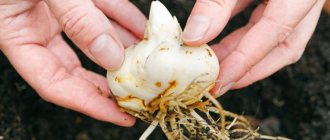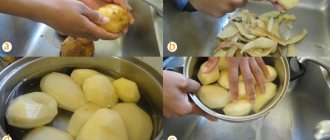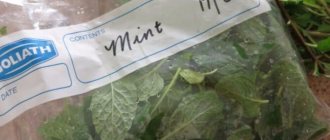In order to propagate a variety of grapes already existing on your plot, or share high-quality planting material with friends, or even earn money, you need to master the methods of rooting a grapevine. Many years of experience have shown that the highest percentage of survival rate and the greatest increase in vegetative bushes in subsequent years is obtained from one’s own planting material. The survival rate and further development of a grape seedling is significantly affected by the duration of mail delivery, the difference in climatic, soil and other growing conditions, etc.
When the plant is “born” and transplanted to a permanent place within one plot, the picture is completely different, especially if we are talking about an organic vineyard. There are many ways to root a grapevine. This includes layering in the Chinese way, and indoor cuttings “on water”, cuttings in cups, in moss, sawdust, etc. However, the most practical and less troublesome grape school is in the open air.
Main advantages of the method
Planting cuttings is the most effective way to propagate grapes, which has many advantages:
- there is no risk of phylloxera infection;
- cuttings are a cheap and reliable way to obtain planting material;
- a well-rooted bush allows you to preserve the vine in winter;
- the method is very simple and economical, which makes it one of the most popular among beginning gardeners.
But we must not forget that a vineyard grown with the help of chibouks will produce a harvest after quite a long time.
In what conditions should the vine be stored?
The optimal temperature is 0ºС…+9ºС, humidity - no more than 80%. At this temperature, it will be possible to preserve in the grapevine the beneficial substances that are necessary for the formation of roots and shoots. If the temperature is higher, the fruit buds will begin to swell. When the temperature drops below the permissible limit, the planting material will freeze.
To avoid dampness, the room must be periodically ventilated in winter. To better preserve them, the seedlings are periodically moistened and rearranged, swapping the top and bottom rows. Store the grapevine with constant access to oxygen. Despite the fact that the chibouk is in a period of rest, vital processes take place in the tissues. With oxygen deficiency, the death of fruit buds is possible.
Blank
The success of further propagation and obtaining a good harvest will depend on how the planting material is properly prepared.
During harvesting, certain rules must be taken into account:
- cuttings must have 4 developed buds;
- the best time to prepare the chibouks is autumn, when the vineyard is pruned after the leaves have fallen;
- the preparation of chibouks is carried out only from well-ripened grapevines, when they acquire a brown color;
- You can save grape stems until spring only those that were obtained from the middle part of the vine;
- the cutting must have a diameter of at least 4-6 mm, be undamaged and uniform in color.
Deadlines
Cuttings are prepared in the fall from vines that have sprouted over the summer, are fully mature, have a uniform color and crackle when bent.
Choosing the right vine
You cannot store grape seedlings in the winter before planting if the vine is very thin, not fully matured, damaged by insects or diseases, or if the shoot thickness is more than 10 mm.
Proper cutting of cuttings
Cuttings must be prepared taking into account the basic requirements, and they are as follows:
- You only need to cut off the shoots that bear fruit;
- you need to cut long shanks - at least 150 cm;
- cuttings must be even;
- there should be no stepsons, leaves or tendrils on them;
- a mandatory requirement is the presence of 2-3 living buds and at least 5 internodes;
- it is necessary to trim only with clean and sharp pruning shears or garden shears;
- pruning is done from the bottom up.
Why do cuttings spoil?
Even if all imaginable and inconceivable rules are observed, many gardeners cannot understand why cuttings cut for storage rot. The most common cause for this is moisture or being stored for too long, but there may be other possibilities.
The cuttings froze
This can be determined by their “glossy” appearance and wateriness. In addition, if you put such cuttings in water, it will quickly become cloudy.
The cuttings have sprouted
At temperatures above 5°C, the cuttings begin to grow. If the buds hatch, it means that the dormant period is over, and there is no point in further storing the material.
Germinated cuttings
The cuttings have dried out
High humidity and positive temperatures can also cause damping off of cuttings. Once they begin to grow, they become easy prey for fungi and viruses.
The cuttings have dried up
If the cuttings crunch when bent and break easily, it means that there was not enough moisture in the shelter and they died.
The cuttings are moldy
Stagnation of condensate in storage contributes to the appearance of mold. To prevent this from happening, moisture must be removed regularly. If mold has already appeared, it is urgent to wipe the cuttings, dip them in an aqueous solution of 1% iodine or in a 3% solution of copper sulfate, and then place them in a new, clean container for further storage.
Almost all of these types of damage indicate that the material is no longer suitable for further propagation - the cuttings will have to be thrown away.
Pre-treatment of cuttings before storage
Before harvesting for the winter, preliminary treatment of grape cuttings is required before storage. In addition to selecting the material, attention must be paid to soaking and disinfection.
Disinfection
Cut homemade chibouks will not survive the winter period if they are not disinfected within 24 hours. The cuttings are fumigated with sulfur dioxide, fungicides and insecticides. The fumigant phostoxin and methyl bromide are also often used.
Submersion and tying up
To preserve nutrients, cut shanks are first immersed in water for 24 hours. After this, they are disinfected in potassium permanganate. Then the planting material is tied into bundles taking into account a certain variety and a tag with the name of the grape is pasted. Place tightly and sprinkle with damp sawdust or sand.
Sorting grape cuttings by variety
It would be useful to remind you that all chibouks must be sorted by grade, tied into bundles and signed. You can tie them together with wire, rope, or, like I did, masking tape. I also wrote the names of the varieties on tape - very convenient.
- Why do soils become salty and how can you avoid this and increase soil fertility?
However, even such a responsible approach will not protect you from mis-grading: you could have been mistakenly sent the wrong variety that you ordered, since even the best specialists sometimes make mistakes.
Storage
Covering the grapes and preserving the stems can be done in various ways.
Underground
The site should not be prone to stagnation of water and protected from sunlight. You need to place the pipes vertically in the hole and cover them with a layer of about 50 cm of earth. Drainage grooves need to be made near the trench.
In the basement, cellar
Chubuki must be sprinkled with damp, clean sand. The storage temperature of grape cuttings in the cellar must be maintained at about +5 degrees Celsius.
In the snow in a box
If there are a small number of chopped vines, then it is convenient to store them in boxes. The bottom needs to be sprinkled with a layer of sand up to 15 cm, then the pipes should be laid, and the sand should be refilled. The box is covered with snow and left until spring.
In a refrigerator
In the refrigerator, storing grape cuttings in plastic bottles in winter is as follows. It is necessary to cut two bottles and make holes in them for ventilation, then fill them with wet sand and place them on the bottom shelf.
Waxing
Paraffinization is a technological method of applying a small film of a protective layer to the top of the stems by immersing the vine in molten paraffin.
Methods for propagating grapes in the garden
Like any other plant, grapes can reproduce in two ways: sexually and vegetatively. The first method is rarely used in garden conditions, because vines grown from seeds only partially inherit the varietal qualities of their parents, and also begin to bear fruit much later than plants propagated vegetatively. Sexual reproduction is used in selection, that is, breeding new varieties.
The vegetative method involves growing a new plant from a part of the mother plant. This allows you to preserve all the varietal qualities of the vine. A section of a stem with one or more buds is used for vegetative propagation.
Cuttings can be purchased at nurseries or specialized gardening stores, but it is much more economical to prepare them yourself for the winter. Chubuk is taken from the most productive bush. You need to be sure that the mother plant is completely healthy and not infected with any grape diseases, because how to preserve grape cuttings in the winter if they are obviously sick?
Rooting methods
Rooting chubuks in winter accelerates the development of the vine by approximately 4 months.
In water
At the bottom of the jar, you need to lay a 3-4 cm layer of cotton wool and add a little weak solution of potassium permanganate. Afterwards the pipes are installed in the liquid. The bottom part of the jar needs to be insulated, and the top part needs to be created in cooler conditions.
In the ground
You need to pour a drainage layer into the bottle, add humus, sand and garden soil in equal parts on top. Chubuki need to be placed in a container and watered well. You can add perlite instead of sand, this will maintain stable soil moisture.
In the sawdust
Pre-soaked cuttings can be placed in damp sawdust. Before this, it is necessary to paraffin the top of the chibouk and wrap it in a damp cloth. Roots will appear in about a month.
Spring preparation of cuttings for planting
Chubuki, which have overwintered and are ready for germination, are taken out of the shelter in late February and early March.
You must first update the cuts, and divide the long pieces into two or three parts. Chubuki are placed in a container with water and left for several days. In this case, the overall temperature should not be lower than 15 degrees. A good solution would be to use stimulants that will awaken the root system. The next stage is planting. Next comes kilching so that the roots become stronger and the buds do not yet think of blooming. By the way, in order for the roots to form better, scratches are applied to the sides of the chibouks.
Instead of kilching, you can use stratification. This is more suitable for gardeners who prepare planting material at home.
There are several steps to follow:
- Choose a container whose walls are as high as a bunch of grapes.
- Pour processed sawdust or previously steamed soil into the box. The layer is no higher than 2 centimeters.
- Grape bunches are placed vertically.
- Cover with soil or sawdust so that one peephole peeks out.
- It is necessary to set the desired temperature in the room - from 20 to 25 degrees Celsius.
- They must remain in such conditions for at least two weeks. It may take three weeks.
Another option is stratification in a package. In this case, the bundles are placed in polyethylene and hidden in a room where the temperature is set at 20-25 degrees. Once every three days, the bags are opened for ventilation. And the bundles need to be kept in bags for about two and a half weeks.
Gradually, root buds will begin to appear on the cuttings, and the upper eyes will produce green shoots.
To ensure that the roots grow intensively, gardeners use growth stimulants. It can be heteroauxin, hyperauxin.
Tips and tricks
The chopped vine will be stored and grown better in the future if you follow some recommendations:
- Rooted seedlings are planted at the end of April. First dig up the soil and add fertilizer to the hole.
- The vine is installed at an angle of 45 degrees with a distance of 15-20 cm, so that several buds are above the ground. Then they fill it with soil, water it, compact the soil and cover it with film.
- The film is removed when the threat of overnight spring frosts has passed. This is how the chibouks develop and ripen faster during the summer season. At the same time, the grapes withstand the winter better, and the next year they produce their first fruits.
Preparing and storing planting material in winter is a rather labor-intensive and complex process, but this is how you will be able to grow new grape bushes that will delight you with a bountiful harvest.
Which plants propagate well from cuttings?
Not all crops in the garden can be propagated from cuttings, but there should be no problems with these plants.
| Plant name | Cutting time | Beginning of rooting of cuttings |
| Privet | June | Immediately after preparation |
| Buddleya | After flowering | Immediately after preparation |
| Elder | End of June – beginning of July | Immediately after preparation |
| Weigela | April May | Immediately after preparation |
| Grape | During autumn pruning | End of February – March |
| Hydrangea | From the end of May to the end of July | Immediately after preparation |
| Maiden grapes | From May to July | Immediately after preparation |
| Deytsia | October November | April May |
| Honeysuckle | During the period of berry appearance | Immediately after preparation |
| cotoneaster | Second half of July | Immediately after preparation |
| Clematis | End of May – beginning of June | Immediately after preparation |
| Bloodroot | End of June – end of July | Immediately after preparation |
| Roses (ground cover, climbing roses, polyanthus, less commonly floribunda) | End of June – beginning of July | Immediately after preparation |
| Boxwood | From July to March | Immediately after preparation |
| Currants (black and red) | From November to March | As soon as the soil thaws |
| Snowberry | November December | April |
| Spirea | September October | Immediately after preparation |
| Thuja | October | Immediately after preparation |
| Forsythia | From November to February | April |
| Chubushnik | Summer or autumn | Immediately after harvesting or in April |
Have you ever tried to propagate plants from cuttings? Take a risk, and you will like it, because it doesn’t require much work, and it helps you save a lot on seedlings.
How to preserve grape seedlings in winter
1. What seedlings can be stored?
Well-ripened seedlings are subject to storage. Storing vegetative seedlings or seedlings with immature growth during the winter can lead to their death. The seedlings must have labels with the name of the variety that will not deteriorate and the inscription will not be erased during storage (plastic, metal, etc.)
2. What problems may arise during storage?
Drying of seedlings, especially the roots, and the appearance of mold.
3. What are the most important indicators during storage?
The most important thing is to maintain the required temperature and humidity, and avoid over-moistening and drying out.
4. What temperature should the air be during storage?
It is necessary to maintain the temperature from 0 to +6 °C
5. What should the air humidity be?
The optimal air humidity when storing seedlings should be 75-85%.
6. What types of storage of seedlings?
The main types of storage are in the basement (cellar) and in the pit (trench).
7. How to store seedlings in the basement?
Two storage methods that we personally use: If necessary, you should treat the basement (walls, ceiling, floor) in advance (in summer) with 3% Bordeaux mixture or copper sulfate in order to protect against mold fungi. This is done every few years and repeated as necessary.
Method 1 Spread a 3-4 cm layer of sand on the floor
Place bunches of seedlings vertically along the wall close to each other and fill them halfway with wet sand. Don’t forget to put sand between the wall and the row of seedlings
Method 2 – stacking Spread sand on the floor in a layer of 3-4 cm
Lay the seedlings horizontally
Place the second row with its roots facing the first row.
Cover the roots with wet sand. If several tiers are planned for the stack, then the thickness of the sand on each layer should be 3-5 cm. The next tier is laid on top of the first, and so on. The maximum height of the stack should not exceed 1.5 m. Each layer is covered with sand. The last layer of sand is 10-15 cm. What wet sand looks like
During the entire storage period, it is necessary to check the moisture content of the sand and, if necessary, moisten it. And also ventilate and make sure there is no mold.
8. I don’t have a basement, what should I do?
As an exception, it is allowed to store seedlings in a trench (we never used it as it was unnecessary). The dimensions of the trench depend on the number of seedlings that need to be preserved; the recommended trench depth is 80-100 cm. Pour sand into the bottom in a layer of 10-15 cm, lay the seedlings in rows (tiers), sprinkling each row with wet sand. Pour a layer of sand on top so that the growth is covered by 20-25 cm, and on top of this sand - a layer of earth 20-25 cm, making a roller over the trench.
9. In the spring I took out seedlings, how can I tell if they are well preserved?
After storage in damp sand, the seedlings should have a bright green cut on the growth and elastic growth. When pruned, the roots should be cream, white or light gray in color, juicy, and elastic to the touch. After storage, before planting, seedlings need to trim the roots, refresh the top and soak in water for 12-24 hours.
10. Where seedlings should not be stored
Seedlings should not be stored in winter in warm, heated rooms, near heating devices or radiators, as well as in rooms where strong fluctuations in temperature and air humidity are possible (balconies, loggias, sheds, outbuildings, etc.)
11. And most importantly
If you doubt your ability to properly preserve seedlings, it is better to buy them in the spring.
Preparatory activities
When the cuttings are cut, you can begin preparing them for storage. Remember that the longer the shanks, the better they are preserved. Therefore, if you are going to store planting material in a cellar or basement, it is quite possible to leave lashes up to one and a half meters long.
Among winegrowers there is a certain classification of grape cuttings according to the number of buds:
- shortened - contain 1-2 buds;
- medium - 3-4 buds;
- long - from 5 eyes or more.
Most often, for convenience, medium-sized shanks with 3-4 eyes are used.
After cutting, the cutting begins to intensively dehydrate, so its chances of becoming a seedling in the future are gradually reduced to zero. In this case, even soaking will be useless.
To avoid moisture loss, planting material must be well-ripened and stored in cool conditions with high air humidity. Try to immediately transfer the planting material to a storage location after cutting.
If such conditions are met, you will not have to, and it is not even advisable to, soak the cut vines. If you see that the vine has dried out after cutting, it needs to be soaked for 24 hours.
For these purposes, use purified water, or preferably melt or rain water. The main thing in this matter is not to overdo it, and not to forget about the soaking time. After two days of soaking, the buds on the stems will simply suffocate, and such material is no longer suitable for germination in the spring.
Another important point to consider is treatment for diseases. Especially if the pipes are purchased. Before planting, the shoots are sprayed with a solution of copper or iron sulfate at a 3% concentration. After this treatment, the preservation of cuttings by spring will be almost one hundred percent.
Before placing the stems in a plastic bag, they are thoroughly ventilated to remove residual moisture and prevent future rotting of the planting material.
In open ground
Depending on which method was used to root the grape cuttings, the moment of planting the crop in open ground is determined. If the root system can be seen through, for example, a transparent container in which rooting was carried out, then when the roots reach 2-3 cm in length, they are transplanted into cups or bottles with soil mixture and after 2-3 weeks into the ground.
When planting grapes (seedlings and cuttings) in open ground in the spring, you need to know the following points:
Planting cuttings in the ground
- As for the temperature regime, planting in open ground is carried out when the temperature is at least 19 degrees in the soil at a depth of 10 cm.
- Before planting grapes in open ground, it is necessary to thoroughly prepare the site by applying organic and mineral fertilizers. Next, they begin to dig holes for the grapes and water them generously with water.
- A mandatory measure for beds with grapes is mulching around the sprouts using peat or wet sawdust.
In order to grow grapes, it is important to know not only the rules for caring for the crop, but also all the nuances regarding the storage of seedlings and cuttings. I tried to share with you my knowledge in this matter. And if you follow all the recommendations described above, then a good and rich grape harvest is guaranteed.
Selection of planting material
Planting material must be chosen carefully; the success of planting depends on its quality. The cuttings must be strong and healthy. Therefore, you need to carefully examine the vine. The color of the shoots should be brown-green, uniform in color. There should be no rot, stains, cuts or damaged areas on the shoot.
Article on the topic: Sagvine tsiteli - grape variety
The diameter of the stem should be from 0.6 to 1 cm. The length can be up to 60 cm. If the shoot is too short, it may die, it will not have enough nutrients. Long shoots of grape cuttings are difficult to store. Be sure to keep up to 4 eyes on the shoot, this will allow the plant to take root better and immediately enter the development phase after transplantation.
How to store grape seedlings in winter before planting
During long-term winter storage, the plant quickly weakens, losing half of its nutrients, and gradually they become unsuitable for planting. The main task during storage is to minimize losses. Grape cuttings can be stored in the refrigerator or in the basement. You can bury the cuttings in the ground. Darkness and low temperature slow down the processes of growth and development, reducing the consumption of nutrients.
Storage in a cellar or basement
Chubuki can be stored in the basement, only the temperature in it must be constant and not fall below zero degrees. Otherwise, the air will become very cold and the vine will freeze. The temperature should not be allowed to rise above +4 degrees, otherwise the buds will swell and bloom. If you regularly ventilate the room or equip it with good ventilation, you can achieve good temperature conditions and optimal humidity.
The cuttings themselves also need ventilation. Be sure to make several holes in the plastic film that is used to wrap the cuttings. About once a month, the package must be unwrapped and the cuttings inspected to prevent mold from forming. If it appears, wipe the cuttings with a napkin soaked in copper sulfate. Cuttings can sometimes dry out, then you need to moisten the vine.
You can use wet sand or pine sawdust. They are placed in a plastic bag and the cuttings are placed there. This will help reduce nutrient loss and retain moisture.
Cold storage
How to preserve the vine at home before planting? A small number of cuttings can be stored in the refrigerator. The main thing is that the length of the vine does not exceed half a meter. Bags of cuttings are placed on the refrigerator shelves at some distance from each other, or they can be stored in a plastic bottle, as in the photo.
The chubuks are cut, treated with water and vitriol, then wrapped in thin cloth, and in this form they are placed in plastic bags. About once a month, the bundles are unrolled to moisten and treat with copper sulfate.
Trench storage
Prikop is the simplest and least labor-intensive way to store cuttings. It is necessary to dig a shallow hole, place the shoots in it, and cover it with earth. The main thing is to choose a place where the water falls and does not stagnate there. Otherwise, the cuttings will rot. Dry soil protects well from diseases, mold, and retains nutrients.











